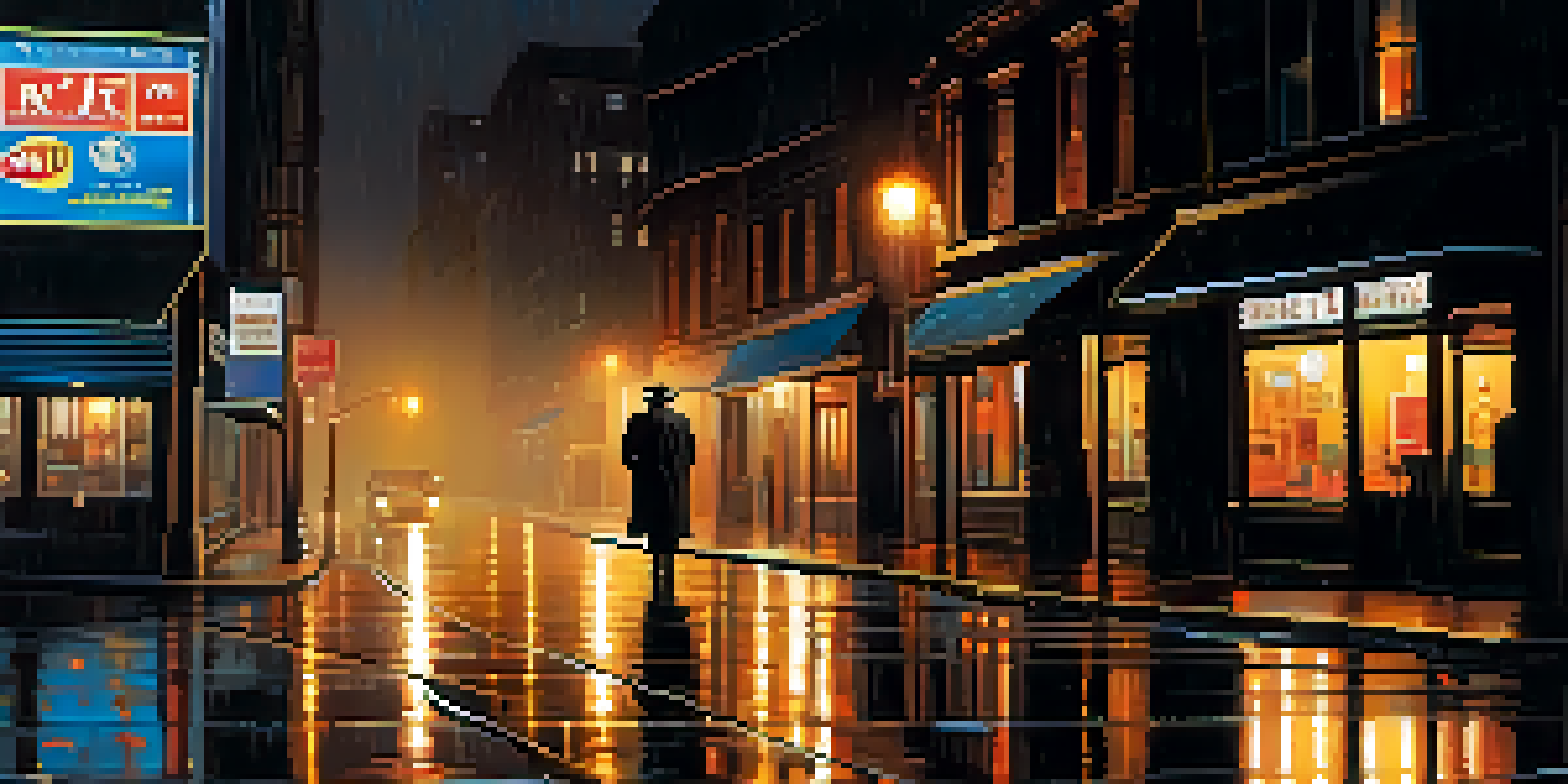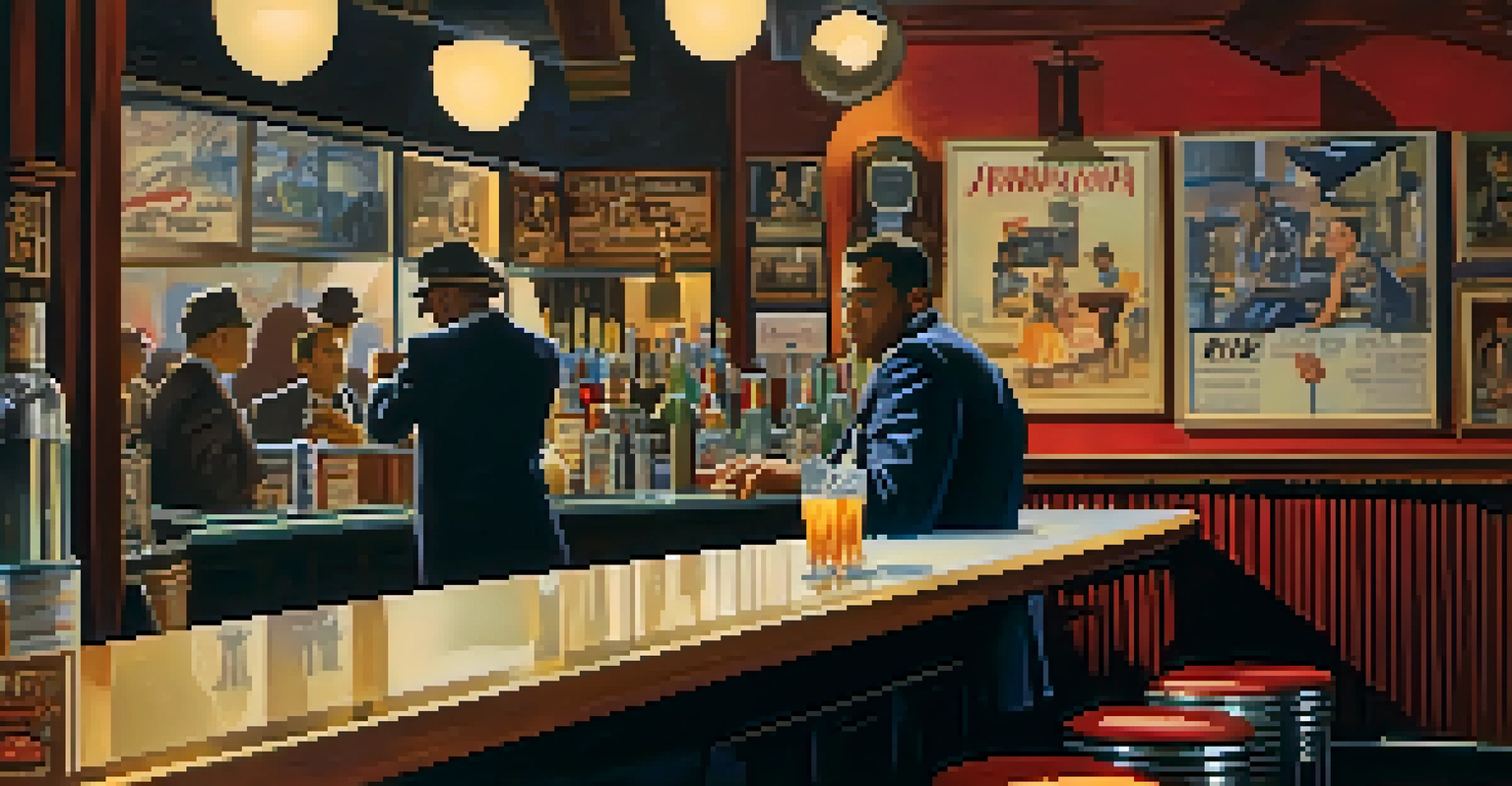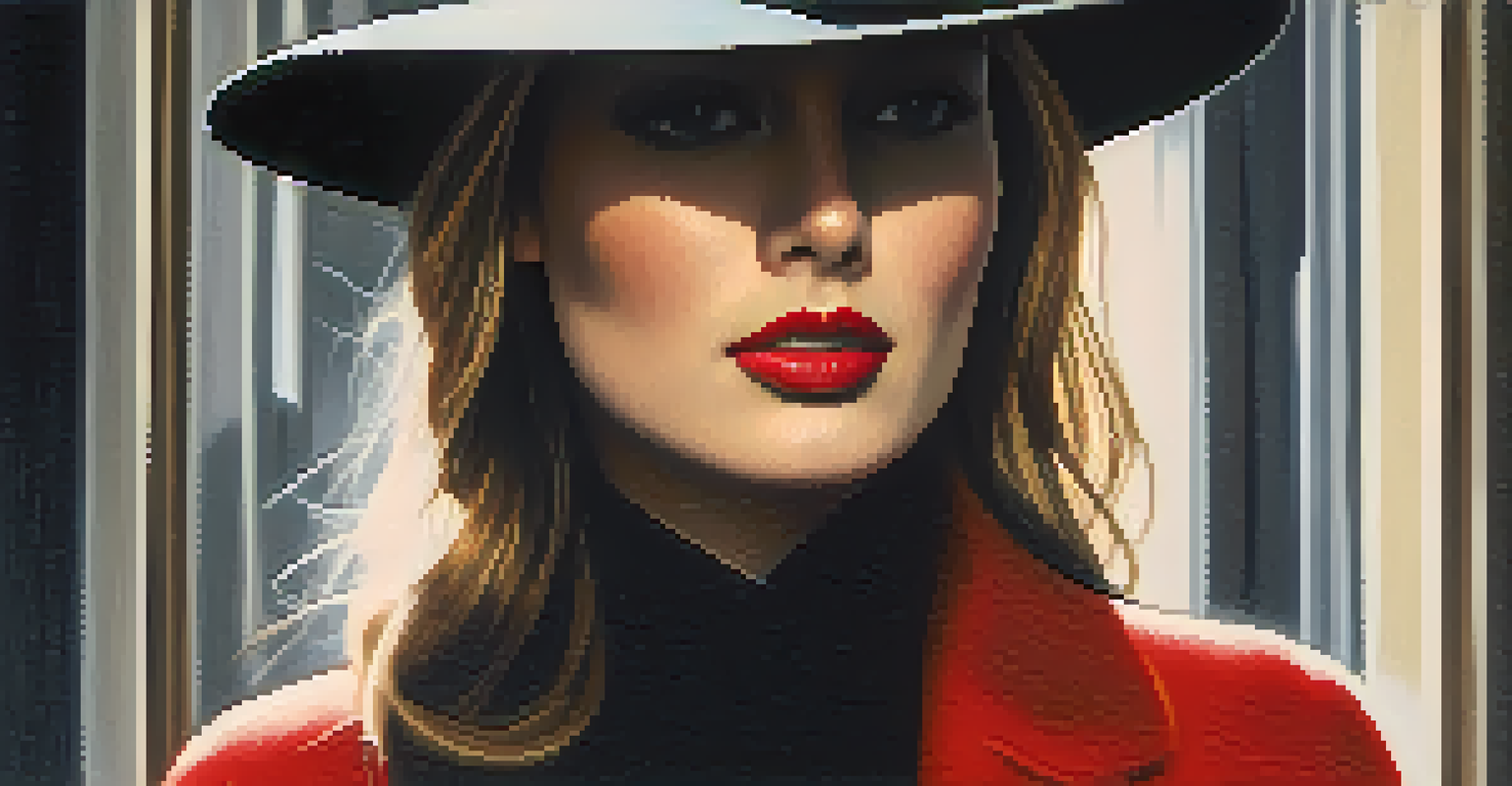The Role of Narrative Structure in Film Noir Storytelling

Understanding Film Noir: A Brief Overview
Film noir is a cinematic style characterized by its dark themes, moral ambiguity, and complex characters. Originating in the 1940s, it reflects post-war anxieties and societal disillusionment. These films often feature a world where the line between right and wrong is blurred, making the narrative structure crucial in conveying these themes.
Film noir is a style that is paradoxical in nature, revealing the ambiguity of human nature and the complexity of our choices.
The visual aesthetics of film noir complement its storytelling, with shadows and low-key lighting enhancing the mood. This style invites viewers into a world filled with tension and uncertainty. By establishing a strong narrative structure, filmmakers can guide the audience through these murky waters, ensuring that the emotional impact remains palpable.
Understanding the role of narrative structure in film noir helps us appreciate how stories are told. It’s not just about the plot; it's about how the plot is crafted to evoke feelings of suspense, intrigue, and often a sense of foreboding. This foundation sets the stage for deeper exploration of storytelling elements.
Key Elements of Narrative Structure in Film Noir
At its core, narrative structure in film noir often comprises a non-linear timeline and flashbacks. These techniques create an intricate web of events that keeps the audience engaged and guessing. By revealing critical information out of order, filmmakers can heighten suspense and deepen character development.

Protagonists in film noir frequently find themselves in morally ambiguous situations, which is reflected in the narrative structure. The choices they make often lead to unforeseen consequences, propelling the story forward. This unpredictability is a hallmark of the genre, allowing viewers to explore the complexities of human nature.
Narrative Structure Defines Noir
Film noir heavily relies on complex narrative structures, including non-linear timelines and unreliable narrators, to create suspense and engage viewers.
Additionally, the use of unreliable narrators can add layers to the storytelling. When the audience cannot fully trust what they are being told, it creates an engaging tension. This structure not only keeps viewers on their toes but also encourages them to question the motivations of characters and the authenticity of the narrative.
Character Arcs: The Heart of Noir Narratives
In film noir, character arcs are pivotal to the narrative structure. Characters often undergo significant transformations, revealing their darker sides as the story unfolds. This evolution is essential for building emotional stakes and driving the plot, as viewers become invested in the characters' fates.
The essence of film noir is moral ambiguity, where characters are not simply good or evil, but complicated beings caught in a web of their own making.
The archetypal noir protagonist—a detective, anti-hero, or femme fatale—embodies the genre's themes of obsession and betrayal. These characters are typically flawed, making their journeys relatable and compelling. As they navigate treacherous paths dictated by their choices, the narrative structure reflects their inner turmoil and moral dilemmas.
Moreover, secondary characters contribute to the richness of the narrative. Their interactions with the protagonist often reveal critical information or serve as catalysts for change. This interconnectedness enhances the storytelling, creating a sense of inevitability in the noir world, where every action leads to a consequence.
Atmosphere and Tone: Setting the Scene
The atmosphere in film noir is meticulously crafted through narrative structure. The pacing, dialogue, and visual elements work together to create a tone of suspense and dread. This immersive experience draws viewers into a world that feels both alluring and dangerous, heightening their emotional investment in the story.
The use of voiceovers is a common technique in noir, providing insight into a character's thoughts and motivations. This narrative device not only helps to establish mood but also deepens the audience's understanding of the protagonist's struggles. It serves as a bridge between the viewer and the character, enhancing emotional resonance.
Morality Shapes Character Arcs
Characters in film noir often face moral dilemmas that drive their development and highlight the genre's themes of guilt and redemption.
Additionally, the setting plays a crucial role in shaping the story's tone. Urban landscapes, smoky bars, and rain-soaked streets are staples of the genre, reinforcing themes of isolation and despair. By weaving these elements into the narrative structure, filmmakers create a rich tapestry that reflects the characters' inner conflicts.
Plot Twists: Keeping Audiences on Edge
Plot twists are a defining feature of film noir, and they rely heavily on the narrative structure to deliver impact. These unexpected turns challenge audience expectations and keep viewers engaged in the unfolding drama. By carefully planting clues throughout the storyline, filmmakers create a tapestry of intrigue that culminates in shocking revelations.
The effectiveness of plot twists often hinges on the pacing of the narrative. Slow builds and subtle foreshadowing create an atmosphere ripe for surprises, making the eventual twist all the more impactful. This method not only enhances the thrill but also reinforces the moral ambiguity that defines the genre.
Moreover, plot twists can serve as a reflection of the character's psyche. As their decisions lead to unforeseen consequences, the twists can mirror their inner conflicts and struggles. This interconnectedness between plot and character deepens the storytelling, making the experience all the more satisfying for viewers.
Themes of Morality: A Central Focus
Morality plays a central role in film noir, intricately woven into the narrative structure. The genre often explores themes of guilt, redemption, and the human condition, challenging viewers to contemplate the nature of right and wrong. This exploration is essential for creating a compelling narrative that resonates with audiences.
Characters are often faced with moral dilemmas, pushing them to make choices that reveal their true nature. The consequences of these choices become a driving force in the story, shaping character arcs and plot development. By placing moral ambiguity front and center, filmmakers invite audiences to engage with the complexities of human behavior.
Atmosphere Enhances Storytelling
The carefully crafted atmosphere in film noir, through pacing and visual elements, immerses viewers in a world of tension and emotional depth.
Additionally, the ending of noir films often reinforces these themes, leaving viewers with a sense of unresolved tension. Unlike traditional narratives that offer closure, film noir frequently concludes with a lingering ambiguity. This open-endedness encourages viewers to reflect on the moral implications of the characters' journeys long after the credits roll.
The Lasting Impact of Narrative Structure in Film Noir
The narrative structure of film noir has left a lasting impact on modern storytelling. Its emphasis on complex characters and morally ambiguous plots continues to influence genres like thriller and neo-noir. Filmmakers today draw inspiration from these techniques, creating narratives that resonate with contemporary audiences.
Moreover, the narrative strategies employed in film noir have paved the way for innovative storytelling methods. Techniques like non-linear timelines and unreliable narrators have become staples in modern cinema, showcasing the genre's enduring legacy. This evolution highlights the versatility of narrative structure in crafting compelling stories.

Ultimately, the role of narrative structure in film noir is about more than just telling a story; it's about creating an experience. By engaging viewers on multiple levels, filmmakers can evoke emotions that linger long after the film ends. This powerful storytelling tradition ensures that film noir remains a vital part of cinematic history.